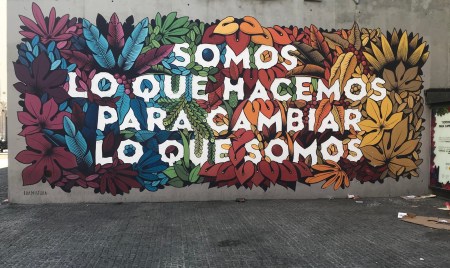Since the killing of George Floyd and the following national reckoning for racial justice, institutions of all kinds have raised their standards. Many of these institutions, including museums, have been working in recent years towards inclusivity. The racial violence that occurred over the summer made it clear that these institutions need to take more direct and visible actions towards equality. The Museum of Fine Arts in Boston has risen to the occasion by pushing toward “a more inclusive MFA,” as stated on their website.1
The MFA’s commitment to inclusivity reaches back almost a year before the murder of George Floyd, to May 2019. A group of middle schoolers and chaperones from the Helen Y. Davis Leadership Academy visited the museum and filed a complaint. While visiting the museum, they encountered racism and verbal abuse from staff and visitors. In response, the MFA instituted unconscious bias and conflict resolution training with its staff, barred two visitors from the museum, and organized meetings with students and staff from the Davis Leadership Academy.
Since that incident, the MFA has shown a strong commitment to making the museum more welcoming and inclusive. In July 2019, the museum announced that they would be hosting four paid teen scholars from Boston to “build curatorial skills, enabling the interns to develop the themes of their exhibition, select and study the works of art, and collaborate on the design, interpretation, and programming.” In September, nearly four months after the Davis Leadership Academy visit, the museum rolled out an extensive plan to improve the school group experience and create “an environment where all young people trust that they will feel safe and celebrated.” The updates position students and teachers as participants rather than visitors and provide school groups with resources and designated staff to make their visit more welcoming and rewarding.
At the close of 2019, the MFA announced a new position within their Division of Learning and Community Engagement: the Senior Director of Belonging and Inclusion. Along with making the MFA more inclusive for all, the position included reaching out and deepening connections with the museum’s current audiences, as well as “diverse yet historically underrepresented audiences.” Over the summer of 2020, Rosa Rodriguez-Williams was appointed as Senior Director of Belonging and Inclusion, with a start date of September 9, 2020. Ms. Rodriguez-Williams received a M.A, in social work from Boston College.
On June 1, in response to George Floyd’s murder, the MFA released a public message of support. In the rest of its summer update, the museum also outlined its resolve to examine its internal policies and culture, engage a diversity consultant to evaluate the museum, and institute paid college internships to diversify the museum field. The update also contained a nod to Ms. Rodriguez-Williams, stating that her work will “play a critical role in delivering on the MFA’s promise to be a Museum for all of Boston.” In an email to The Terrace, Rodriguez-Williams said she plans to “prioritize the visitor’s experience to foster belonging and be a Museum where everyone who walks through our doors feels seen, valued and respected.”
Rodriguez-Williams also attributed her “desire to lead within organizations” to her experience as a student here at Boston College. She described her time at BC as a formative period responsible for “laying [the] groundwork that set me up for success and my heart for inclusion.” She is grateful for her time at the Boston College School of Social Work, where she “matured personally and evolved professionally as a social worker.” For Rodriguez-Williams, “Impacting the world, through my work with organizations and the people in them is not only an honor but a privilege.”
The MFA’s recognition of its own shortcomings, its efforts to be better in the future, and its specific action items are commendable. Institutional racism exists in every facet of life, and therefore needs to be dismantled on each of those levels. The MFA is committed in the fight against racism and should serve as an inspiration and example to the broader community. The fight for racial justice is ongoing, but actions like these taken by the MFA get us closer to our ultimate goals of equality and inclusion.
1 “Toward a More Inclusive MFA” Museum of Fine Arts, Boston. https://www.mfa.org/about/toward-a-more-inclusive-mfa



